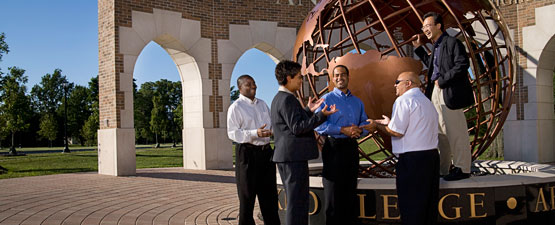Professional Dissertations DMin
Date of Award
2009
Document Type
Project Report
Degree Name
Doctor of Ministry
College
Seventh-day Adventist Theological Seminary
Program
Doctor of Ministry DMin
First Advisor
David Merling
Second Advisor
Bruce Bauer
Third Advisor
James J. North
Abstract
Problem
Seventh-day Adventist evangelism has attracted fewer postmodern Generations X and Y persons in the recent past due to a lack of understanding subgroup culture and the church’s tendency to accommodate only didactic preaching in a public evangelistic series. Complicating transformation are some Builders and Boomers who are resistive of the needed deep changes in public evangelism ministry which includes small groups. Researched principles that could readily be applied without alienating the older generations had to be field tested in six evangelistic campaigns in order to determine if success could be obtained in reaching Generations X and Y.
Method
Three structural paradigms were found to be present in every model that deals with change. These change model paradigms are the Technical, Transactional, and Transformational. Galatians 5 exhibits the biblical importance of developing a relational model in evangelism change theory. Consequently, the literature review, not only labeled the existing paradigms, but demonstrated eight specific action steps that bridged the reluctance toward change amongst the older and financially supportive generations. Paradigms involving change were found to be useful information tools but could not accomplish transformation without action steps. The action steps were carried out in a six evangelistic campaign test model. The model was to be highly visible so as to be understood by the various committees in the local churches. Local committees within the church were intentionally made up of both Builders/Boomers and Generations X and Y in order to keep the overall goal of reaching post modems visible. The model also included broad-based action teams that were the decision makers for the evangelism event in each locality. An evangelistic staff change which was oriented toward the younger generation took place about midway in the evangelistic field test model. The action steps included a pre-evangelistic campaign dinner at one of the finest restaurants available for known non Seventh-day Adventist guests. The intention of the dinner was to initiate a friendship role between the evangelistic team, the church, and known guests who were not yet members. Friendship oriented galaxy groups led by a Seventh-day Adventist team leader were formed during the regularly scheduled meetings to serve as discussion classes immediately following each evangelistic sermon.
Results
As planned, no abrupt changes took place in the field testing because deep change requires incremental forward movement toward transformation. As the field model slowly developed over a period of more than a year in six different locations, the median average age in attendance each evening dropped to a younger age, even though there were variables due to location and advertizing. In drawing subgroup Generation Y toward the evangelistic meetings, the parents of Generation Y known as leading Generation X were attracted to Seventh-day Adventist evangelism because they had to bring their children. The Galaxy groups also became the local church’s ongoing evangelism followup after the hosted campaign left town.
Conclusions
The churches that hosted the campaigns in the test model and beyond have benefited by relational evangelism practices. When the model became visible enough to be practical, the Builders and Boomers began to support relational evangelism and many of them joined the friendship galaxy groups. Graffiti Evangelism developed amongst Generation Y and became a younger galaxy sub group, as was expected stemming from the research. By shortening didactic preaching and emphasizing relational evangelism in the discussion galaxy groups that followed each meeting, both Builders/Boomers and Generations X and Y found themselves in friendship circles that resembled subculture trends in general. The visible model that was developed from the existing paradigms and action steps found in the literature became a workable product in the Seventh-day Adventist evangelism process.
Subject Area
Evangelistic work--Texas--Seventh-day Adventists; Interpersonal relations; Texas Conference of Seventh-day Adventists
Recommended Citation
DuBosque, John L. Jr., "Creating A Relational Model of Evangelism in the Texas Conference" (2009). Professional Dissertations DMin. 479.
https://dx.doi.org/10.32597/dmin/473/
https://digitalcommons.andrews.edu/dmin/479
Creative Commons License

This work is licensed under a Creative Commons Attribution-No Derivative Works 4.0 International License.
DOI
https://dx.doi.org/10.32597/dmin/473/
Files over 3MB may be slow to open. For best results, right-click and select "save as..."



